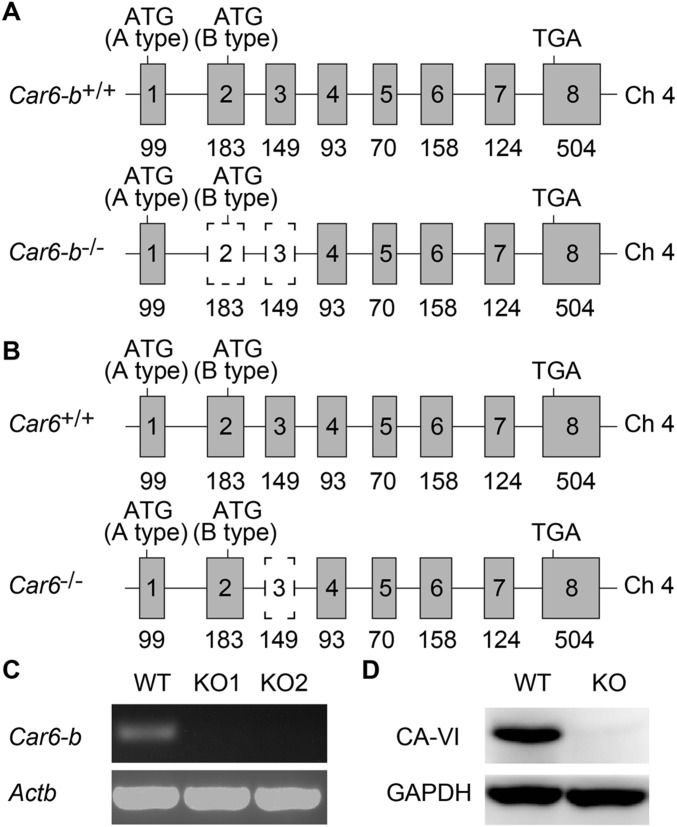Fig. S3.
Generation and identification of Car6-b−/− cells and Car6−/− mice by CRISPR/Cas9 system. (A and B) Schematic illustration of the deletion sequences of Car6-b in Car6-b−/− RAW264.7 cells (A) or Car6 in Car6−/− mice (B). Car6 is located in chromosome 4 and contains eight exons. The targeting vector for the RAW264.7 cell line was designed to delete exons 2 and 3, and the targeting vector for mouse was designed to delete exon 3, resulting in a frame-shift of ORF and premature termination. The start codon of Car6-a and Car6-b and stop codon are indicated, respectively. (C) The efficiency of deletion was determined using PCR. (D) CA-VI protein in Car6+/+ or Car6−/− mouse salivary was detected using immunoblot analysis. Data shown are representative of three independent experiments.

